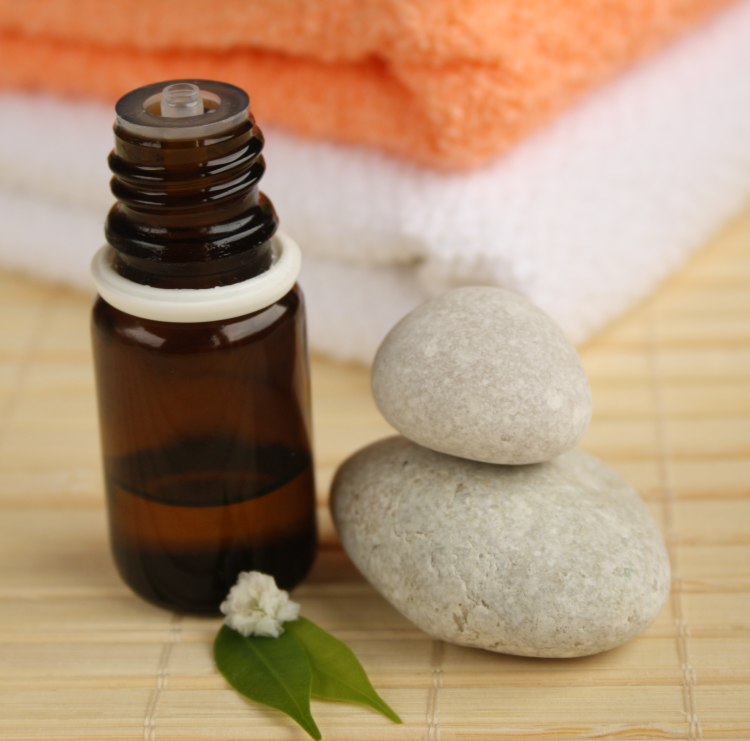Diflucan alternatives (medical and natural ones)
Diflucan (fluconazole) is an antifungal drug used in treatment of fungal and yeast infections by inhibiting their growth. It belongs to a class of drugs called azoles. This post provides a detailed and evidence based look at medical and natural Diflucan alternatives.
Diflucan
Fungal infections can affect any part of your body including:
- Throat
- Oral cavity
- Genital area
- Bladder
- Lungs
- Blood
Diflucan is also used to prevent fungal infections (1). It is recommended as a prophylaxis in people with compromised immune system (2, 3, 4). The following groups of people fall in the category of immune-compromised individuals:
- Cancer patient
- AIDS patient
- People with transplants
- People with certain autoimmune diseases
The symptoms of cutaneous (skin) fungal infections may include the following:
- Itching
- Burning
- Pain
- Soreness
- Rash
The symptoms of systemic fungal infections tend to be very different depending on the actual causative agent and also depending on the affected tissue (organ).
But some of the common symptoms include the following:
- Fever
- Low energy
- Skin rash
- Oral lesions
Indications and dosage of diflucan
Diflucan is an antifungal that can be used to treat many different fungal infections. Diflucan is available as oral suspensions or tablets. Diflucan tablets and suspension should be stored at room temperature and away from sunlight. Throw away opened or unused oral diflucan suspension, if not used within 2 weeks. The main indications for diflucan use are (5):
- Vaginal candidiasis: The recommended dose of diflucan for the treatment of candidiasis of vagina is 150 mg. It is taken as a single dose for the treatment of vaginal candidiasis.
- Oral and esophageal candidiasis: The recommended dose for the treatment of candida infection of oral cavity and esophagus is 200 mg the first day. The initial dose is followed by 100 mg daily dose for the next 2 weeks.
- Urinary tract infection: The recommended dose for the infections of urinary tract is 50 to 200 mg daily (6).
- Cryptococcus meningitis: The recommended dose for cryptococcus meningitis is 400 mg the first day. Followed by 200 mg daily. The drug is continued up to 10 to 12 weeks after the CSF (cerebrospinal fluid) culture comes back negative (7).
Side effects and precautions for diflucan
Like every other drug available in the market, diflucan also has some side effects (8). Get emergency help if you experience any sign of allergic reaction to diflucan. The signs of allergic reaction include:
- Hives
- Skin rash
- Facial swelling
- Breathing difficulty
Given below are some of the more common side effects of diflucan:
- Stomach ache
- Head ache
- Dizziness
- Change in taste
Diflucan interactions
Diflucan can cause interaction with many other drugs (9).

Mentioned below are some of the most common drugs with which diflucan show a significant drug interaction:
- Halofantrine
- Prednisone
- Theophylline
- Vitamin A
- Antidepressant (amitriptyline)
- Blood thinner (warfarin)
- Cancer medicine (cyclophosphamide, vincristine)
- Narcotic medicine (fentanyl, methadone)
- NSAIDs (ibuprofen)
- Oral diabetes medicine (glyburide, glipizide)
- Tuberculosis medication (rifampin, rifabutin)
Medical alternatives for diflucan
Diflucan is an effective and potent antifungal medicine. But some people might be allergic to it or it might not suite them. If that is the case then you should consider taking alternatives for this drug. There are many alternatives for diflucan available in the market. In the section below we are going to discuss a few pharmaceutical alternatives to diflucan. Before using any kind of drug make sure to consult your physician.
Clotrimazole
Clotrimazole is an antifungal drug. This is mainly for topical use. Clotrimazole alters the cell membrane of fungi thus killing them. Do not use clotrimazole if you are pregnant or a breastfeeding female (10).
Diflucan vs clotrimazole
Both these drugs belong to the azole class of drugs. Diflucan is suitable for internal and external use. However, clotrimazole is suitable only for topical use. The main adverse reactions to diflucan are fever and tiredness. However main concerns about using clotrimazole are allergic reactions and secondary bacterial infection.
Indications of clotrimazole
Following are the indications for the use of clotrimazole (11, 12):
- Ringworm
- Jock itch
- Athlete’s foot
- Virginal fungal infection
- Oral thrush
How to use clotrimazole?
For oral thrush apply the cream on the buccal mucosa with fingers.
For skin fungal infection, first wash your skin. Dry the affected area and apply a thin layer of the cream. Do not massage the cream onto the skin. Let it dry.
For vaginal yeast infection, follow the steps below for applying the clotrimazole cream:
- Take the tube and break the seal.
- Now screw the applicator tip onto the tube.
- Fill the applicator until the plunger stops moving backwards.
- Remove the applicator from the tube.
- Lie on your back and draw your knees up to your chest.
- Take the applicator and gently insert the tip into your vagina.
- Slowly press the plunger till all the medicine is inserted into the vagina.
- Remove the applicator and clean it with warm water.
Side effects and interactions of clotrimazole
The drug interactions of clotrimazole are not very common. But clotrimazole comparatively has a high incidence of allergic reaction. If you experience signs of allergic reaction, contact your doctor. The signs of allergic reactions are (13):
- Hives
- Facial swellings
- Breathing difficulty
- Rash
The common side effects of clotrimazole include:
- Secondary bacterial infection
- Skin irritation
- Fever
- Stomach upset
Dosage of clotrimazole
For vaginal fungal infection 100 mg clotrimazole cream is applied intravaginally for 7 days (14).
Nystatin
Nystatin is an antifungal drug. Nystatin does not enter into the blood when ingested. Nystatin alters the cell membrane of fungi. It form pores in the cell membranes of fungi and kills them (15).
Diflucan vs nystatin
Diflucan and nystatin belong to the different class of drugs. Diflucan acts as an antifungal to all kinds of fungal infections. Diflucan, when ingested, can enter the blood stream. Nystatin acts only against oral and gastric tract fungal infections. When ingested, nystatin does not enter the blood stream. The side effects of diflucan and nystatin are mostly the same.
Indications of nystatin
Nystatin is helpful in treating the following infections (16):
- Oral thrush
- Esophageal fungal infection
- Fungal overgrowth in the gut
How to use nystatin?
When using nystatin for oral thrush, rinse your mouth before use. Take the recommended dose and swish it around in your mouth. Swallow the solution after a good 30 second swish.
Nystatin side effects and interactions
Allergic reactions to nystatin have been reported.

So contact your doctor if you experience signs of allergic reaction. Following are a few common side effects of nystatin (17):
- Nausea
- Vomiting
- Upset stomach
- Stomach pain
As far as Nystatin interactions are concerned, there are not many and as of today only 1 drug is known to interact with Nystatin - brewer's yeast (18).
Dosage of nystatin
Nystatin is available in forms of:
- Oral tablets
- Oral suspensions
- Oral capsules
For oral thrush, 1 to 2 oral lozenges 4 to 5 times a day is a suitable dose (19).
For intestinal candidiasis, 500,000 to 1,000,000 units orally 3 times a day should be used (19).
Itraconazole
Itraconazole is another antifungal medicine. It is effective against various fungal infections. Unlike most of the anti-fungal drugs, itraconazole is also used to prevent infections in immune-compromised patients (like AIDS patients) (20).
Diflucan vs itraconazole
Diflucan and Itraconazole belong to the same class of drugs called azoles. Itraconazole has a broader spectrum anti-fungal action than diflucan i.e. it kills more fungi than diflucan. The side effects of itraconazole are also more sever than diflucan.
Indications of itraconazole
The main indications of itraconazole are as follows (20):
- Blastomycosis
- Histoplasmosis
- Aspergillosis - Aspergilloma
- Aspergillosis - invasive
- Oral Thrush
- Esophageal candidiasis
- Onychomycosis - toenail
- Onychomycosis - fingernail
- Coccidioidomycosis
- Sporotrichosis
- Cryptococcosis
- Cryptococcal meningitis - immunosuppressed host
- Vaginal candidiasis
How to use itraconazole?
Itraconazole is mostly administered in a hospital setting under the supervision of medical professionals. That’s because this drug is administered through intravenous route that requires a good deal of medical expertise.
Itraconazole side effects
The most common side effects of itraconazole are as follows (21):
- Gas
- Nausea
- Vomiting
- Stomach upset
- Headache
- Dizziness
Itraconazole interactions
The following drugs may interact with itraconazole (22):
- Colchicine / probenecid
- Biltiazem
- Belladonna / caffeine / ergotamine / pentobarbital
- Alprazolam
- Amiodarone
- Felodipine
- Fentanyl
- Lovastatin
- Salmeterol
Dosage of itraconazole
Itraconazole is available in various different formulations like (23):
- Oral tablets
- Oral capsules
- Powders
- Oral suspensions
- Intravenous injection
The dose of itraconazole depends on the type and extent of fungal infection and should be prescribed by your physician.
Miconazole
Miconazole is an antifungal drug. It is best suited for topical use. Miconazole acts be affecting the cell membrane of the fungi. The altered cell structure of fungi leads to their death (24).
Diflucan vs miconazole
Diflucan and miconazole both belong to azole class of drugs. Diflucan can be used for systemic and cutaneous fungal infections. But miconazole is used only for cutaneous and mucosal fungal infections. The main concern with using diflucan is fever and tiredness. But, headache and allergic reactions are the main concerns with miconazole use.
Miconazole indications
Miconazole is mostly used for the treatment of cutaneous (skin) fungal infections. Following are the indications of miconazole (25):
- Jock itch
- Vaginal fungal infection
- Oral thrush
- Ringworm
- Athlete’s foot
- Pityriasis - fungal infection that causes lightening and darkening of skin
How to use miconazole?
For oral thrush, miconazole cream is applied to the buccal mucosa. Before applying the cream rinse your mouth well and apply the dose of the drug as recommended by your doctor.
For skin use, first wash your skin thoroughly with tap water. Dry the skin and then apply a thin layer of miconazole lotion or cream on the affected area
For vaginal use, take out a small amount of cream into your hand. Now gently massage the cream on to the itching and burning area.
Miconazole side effects
Miconazole has side effects just like any other drug. Allergic reaction to this drug is rare (26).

But if you experience any sign of allergic reaction consult your doctor at once. Following are the common side effects of miconazole:
- Headache
- Redness of skin
- Mild skin and mucosal irritation
Miconazole interactions
The following drugs interact with miconazole (27):
- Anisindione
- Astemizole
- Dicumarol
- Eliglustat
- Pseudoephedrine / terfenadine
- Terfenadine
- Warfarin
Dosage of miconazole
Miconazole is available in many forms, such as:
- Powder
- Spray
- Lotion
- Cream
For oral thrush: 50 mg miconazole creams should be applied to the buccal mucosa. Use this cream for 14 consecutive days (28).
For cutaneous candidiasis: Apply thin layer of cream on the affected area. Use till infection clears up (28).
For vaginal use: 2 % and 4 % creams are recommended (28).
Terconazole
Terconazole is an antifungal medicine. It is used for the treatment of vaginal fungal infections. The yeast infection of vaginal can cause burning and itching. Terconazole works by inhibiting the growth of yeast (29).
Diflucan vs terconazole
Both diflucan and terconazole belong to the same class of drugs called azoles. They both inhibit the growth of fungi. Diflucan helps treat different types of fungal infections. But terconazole is used only for vaginal fungal infection. Diflucan is available in the form of liquid preparations and tablets. But terconazole is only available in the form of cream.
Terconazole indications
Virginal fungal infection is the main indication of terconazole (30).
How to use terconazole?
Terconazole is only for vaginal use. Wash your hands before and after application. Following are the steps you need to follow when using terconazole:
- Take the tube and break the seal.
- Now place the applicator tip on the tube.
- Now, you should fill the applicator till the plunger stops.
- Next, remove the applicators from the tube.
- After you’re done, lay down on a flat surface and raise your knees up.
- Now take the applicator and put its tip gently inside your vagina.
- Slowly press the plunger till all the medicine is inserted into the vagina.
- Remove the applicator and clean it with warm water.
Terconazole side effects
Like every drug out there, terconazole also has side effects. Allergic reactions to terconazole are a reported fact. So if you detect any sign of allergic reaction after using terconazole go to your physician immediately. Following are the common side effects of terconazole (31):
- Headache
- Body ache
- Abdominal pain
- Vaginal itching
- Increased menstrual cramps
Terconazole interactions
Terconazole drug interactions are not well documented. But it has been reported that it can cause interactions with (32):
- Steroids
- Certain vitamin supplements
Dosage of terconazole
Terconazole is present in the form of vaginal cream and suppositories. The vaginal cream is available in the concentrations of 0.4 % and 0.8 %. The 0.4 % cream should be used intravaginally once daily at night time for 7 days. The 0.8 % cream should be used intravaginally once daily at night time for 3 days. One vaginal suppository should be used at night time for 3 consecutive days (33).
Natural alternatives to diflucan
Diflucan is a drug that is used for the treatment of fungal infections. Diflucan is an excellent antifungal with considerably mild side effects. In the section above we have discussed some of the medical alternatives of diflucan. But in this section we are going to talk about all natural alternatives to diflucan. The thing about natural alternatives is that they have less side effects. Some of these alternatives are just as good as antifungal drugs.
Candidate
Candidate is an all-natural antifungal. When you start taking candidate your symptoms will worsen before they get better. Don’t worry, this is a good sign. This means the yeast cells dying and this reaction is called candida die-off. Candidate is a 100% herbal solution with three main ingredients. These ingredients are lemon grass, pot marigold and Pau d’Arco bark (34).
The essential oil of lemon grass is extracted from the freshly cut leaves of the plant. Lemon grass acts as a probiotic. This means it helps the growth of health promoting bacterial. Lemon grass helps slow and reduce the candida overgrowth in the gut.
The pot marigold helps flush out candida toxins from the body. It also helps protect the healthy cells of the body.
Pau d’Arco bark has the ability to inhibit the candida growth. And it helps flush out the candida toxins from the gut.
Diflucan vs candidate
Candidate is a relatively new antifungal. Diflucan is a synthetic drug that has been in use for over 2 decades. As candidate is a natural alternative, so it has fewer side effects. You don’t need a prescription for candidate use. Both of these have almost the same potency against fungi.
Indications of candidate
Given below are some most important uses of candidate (34, 35):
- Overgrowth of yeast in the gut.
- Systemic fungal infection.
How to use candidate?
Candidate is for internal use. Mix 15 drops of candidate in 1/4th glass of water. Drink this solution three times daily for 6 weeks.
Candidate side effects and interactions
The side effects and drug interactions of candidate are not well documented. The only side effect highlighted is allergic reaction. The allergic reaction can be due to any of the ingredients present in candidate.
Caprylic acid
Caprylic acid is a fatty acid found in coconut oil. Caprylic acid is a potent antifungal and it also helps restores the pH of gut. Japan’s Niigata University stated that “the fungicidal effect of caprylic acid on Candida Albicans was exceedingly powerful”. Caprylic acid alters the cell wall of fungi thus rendering them ineffective. Caprylic acid helps normalize the pH of stomach and flush out toxins (36, 37, 38).
Diflucan vs caprylic acid
Diflucan only targets fungi. But caprylic acid is both antifungal and antibacterial. Diflucan is a more potent antifungal than caprylic acid. Both diflucan and caprylic acid mostly have the same side effects. But the side effects of caprylic acid are rare.
How to use caprylic acid?
Caprylic acid is available in form of liquid and tablets. 1000 to 2000 mg per day is the proper dose of caprylic acid. Caprylic acid should be taken for 2 to 3 months. And it should be taken with meals for better absorption (39).
Caprylic acid side effects and interaction
Caprylic acid has no known drug interactions. But in rare cases it has shown some side effects. The side effects may range from mild to severe. Here is a brief overview of major side effects associated with caprylic acid (40, 41):
- Headache
- Nausea
- Upset stomach
- Constipation
- Abdominal pain
Tea tree oil (TTO)
You should not confuse tea tree oil with common tea plants (black and green tea). Tea tree oil is native to Australia. The oil is extracted from the leaves of tea tree. Tea tree oils has antibacterial and antiviral properties as well. TTO alters the structure of cell membrane of certain fungi (Candida Albicans).

TTO helps inhibit the respiration of Candida Albicans (42). Thus killing of the fungus. Melaleuca alternifolia (Tea Tree) Oil: a Review of Antimicrobial and Other Medicinal Properties states that TTO has potent antifungal effects.
How to use tea tree oil?
Tea tree oil is only for external topical use. It should NOT be used in eyes or swallowed. Tea tree oil is mainly used for the treatment of toenail fungus and athlete’s foot (43).
For nail fungus - 100% tea tree oil solution is recommended. Use twice daily for 6 months. The oil is applied in the nail and the surrounding skin and left to dry.
For athlete’s foot - 25% to 50 % tea tree oil solution is the recommended concentration. Use this twice daily for one month. This helps alleviate the symptoms and clear up the infection.
Tea tree oil side effects and interactions
Tea tree oil should not be swallowed because it’s toxic. Pregnant and lactating mothers should use tea tree oil with caution. Tea tree oil is safe for most people but in some people it can cause skin reaction. The symptoms could include (44):
- Itching
- Burning
- Redness
- Dryness
Garlic
Garlic is the most commonly used herb/spice in numerous cuisines all around the world. But it has also been in use for centuries for its medicinal purposes. An article published by the Huntington College of Health Sciences stated that “garlic has antifungal activity; it inhibits both the growth and function of Candida Albicans”. Ajoene is a compound present in garlic. Mostly this compound imparts antifungal properties to garlic (45).
Garlic also has antibacterial properties. It helps boost the immune system and control blood sugar levels. The stabilization of blood sugar helps fight fungal infections faster. Because fungi thrive on high blood sugar levels.
How to use garlic?
Garlic is readily available in every super market around the world. Garlic is suitable for internal and external use.
Taking 2 to 4 grams of fresh minced garlic daily can help fight fungal infections. Garlic supplements are also available in form of tablets. 600 to 900 mg tablets are recommended for daily use.
Garlic oil can be ingested or applied on infected skin. Taking a teaspoon of garlic oil daily can help treat fungal infections. Applying this oil on infected skin helps kill fungi and heal the skin.
Garlic use precautions
Garlic has natural blood thinning action. So you should avoid excess use of garlic, if you have a bleeding disorder or taking pharmaceutical blood thinners. Some people are allergic to garlic they should stair clear. Some of the side effects of garlic supplements are (46):
- Headaches
- Bloating
- Loss of appetite
- Bad breath
Apple cider vinegar (ACV)
Apple cider vinegar helps heal the body. In addition, it also has antibacterial and antifungal properties. Apple cider vinegar is made from crushed and aged apples, so it’s completely natural. Apple cider vinegar is a natural probiotic. This means that it helps the growth of good bacteria (47, 48).
ACV helps fight cutaneous and systemic overgrowth of yeast. ACV is also rich in antioxidants that help flush out toxins and bacteria from the body. Using raw organic apple cider vinegar has better affect against fungal infections.

ACV is a natural antifungal and is considerable safer than pharmaceutical drugs. But it does have a few side effects. Stomach upset and tooth enamel wear are the two main side effects.
How to use apple cider vinegar?
Apple cider vinegar can be used for skin and systemic fungal infections (49).
Dilute a spoonful of apple cider vinegar in lukewarm water. Take this before every meal. This helps fight of the overgrowth of yeast. The active ingredients in apple cider vinegar help boost the immune system and flush out the toxins. The energy and immune boost help the body fight the yeast infection more effectively.
Fungal infections mostly occur on warm and moist areas of the skin. Using apple cider vinegar will help dry out the area of infection. The acidity of ACV helps alleviate the itching, pain and redness. Mix equal parts of apple cider vinegar with water. Take a cotton swab and dampen it with the mixture. Now apply it to infected area and let it dry. Repeat this 3 to 4 times daily till the infection clears up. You can also mix apple cider vinegar with rice flour to make a paste. Apply the paste on the infected area and let it dry. After that gently scrub it off. This helps remove the dead skin and promotes faster healing.
Olive leaf extract
Olive leaf extract is derived from olive leaves. Oleuropein is an active ingredient in olive leaf extract. Which acts as a candida killer. Olive leaf extract is a natural and powerful antifungal. In addition, it also has anti-parasitic and anti-viral activity. Olive leaf extract also contains potent antioxidants that help improve the overall health (50).
Olive leaf extract stimulates the body against invaders like candida. Oliver leaf extract helps stabilize the blood sugar level. This is important because high blood sugar levels help the fungal infections to thrive. Olive leaf extract also helps give the body an energy boost. This is helpful because mostly the main complain of someone suffering from systemic candida infection is low energy levels.
Take caution when using olive leaf extract if you’re pregnant or nursing. If you are allergic to olives or pollen from olive trees then you should avoid this extract.
How to use olive leaf extract?
Olive leaf extract is available is available in both capsule and solution form. Olive leaf extract is suitable for internal and external use. It is important to drink lots of water when taking olive leaf extract. And remember to start off with a small dose.
500 mg capsules of olive leaf extract are available in market. 2 capsules 3 times a day with meals is recommended.
The olive leaf extract can be used for cutaneous application. This helps relive itching and redness.
Aloe Vera
Aloe Vera plant has green skin and clear gel. And it’s chock full of vitamins, minerals, anti-sceptic and anti-inflammatory agents. Recently scientists have isolated a protein called 14 kDa from aloe vera. This protein has antifungal activity (51). Aloe vera is an all-natural antifungal with no side effects. A plus point is that all the nutrients and minerals in aloe vera help improve health. Aloe vera is available in all parts of the world. Even if you don’t have access to an aloe vera plant, you still buy aloe vera products in almost any super market.
How to use aloe vera?
Aloe vera is good for both external and internal use. Aloe vera is present in form of gel, juice and suppositories.
Aloe vera suppositories are used for the treatment of vaginal candidiasis.
Aloe vera gel is for external use. It is used for skin fold fungal infection, jock itch and athlete’s foot. Aloe vera gel helps relive the itch and pain associated with fungal infections. It also helps reduce the redness.
Aloe vera juice is for internal use. It is used for treatment for fungal infections of digestive system. The juice also helps clear out toxins from the body. And also helps boost immune system.
Conclusion
Diflucan is an antifungal drug used for treatment of cutaneous and systemic fungal infections. There are many natural and medical alternatives available for diflucan. People generally prefer the natural alternatives. Because the natural alternatives are safer and do not need a prescription. They are also preferred because they have few to none side effects and drug interactions. If the right natural antifungal is used it can just as effective as any drug. However, the combination of both natural and pharmaceutical antifungal sometimes give the best results.
Diflucan is an antifungal drug that can be used for various different fungal infections.
Clotrimazole and miconazole are a topical antifungal.
Nystatin is an antifungal drug. It is only suitable for oral thrush and overgrowth of yeast in the gut. Because when ingested it cannot enter the blood stream.
Itraconazole is a broad spectrum antifungal. It can fight off different types of fungal infections.
Terconazole is an antifungal used for the treatment of vaginal fungal infections.
Garlic, aloe vera, olive leaf extract and apple cider vinegar are natural antifungals. These are suitable for both internal and external use. They have shown promise as a potent antifungal. And without all the risks of synthetic antifungals.
Tea tree oil (TTO) is a potent natural antifungal. But it is for external use only. If ingested TTO can be toxic and harmful for the body.
Candidate and caprylic acid are natural alternatives to diflucan. Both these are for internal use only. The plus point is that they have few to none drug interactions and side effects.
| Written by: | Michal Vilímovský (EN) |
|---|---|
| Education: | Physician |
| Article resources: | See numbered references within the post. |
| Image resources: | Adobe Stock |
| Published: | April 16, 2016 at 9:40 PM |
| Next scheduled update: | April 16, 2018 at 9:40 PM |
Get more articles like this in your inbox
Sign up for our daily mail and get the best evidence based health, nutrition and beauty articles on the web.


Ache in left arm that you should not ignore
Alkaline water dangers: why you should not drink it
How to Avoid Sleepiness While Studying?
23 Foods That Increase Leptin Sensitivity
Low dopamine (e.g. dopamine deficiency): causes, symptoms, diagnosis and treatment options
Swollen taste buds: the ultimate guide to causes, symptoms and treatment
Thin endometrial lining: causes, symptoms, diagnosis and treatment
Pimples inside nose: the complete guide
Holes in tonsils: definition, symptoms, treatment and prevention
How to deal with an ingrown hair cyst
Allegra vs. Zyrtec vs. Claritin
Allergy to penicillin and alternative antibiotics
How to get rid of phlegm (excessive mucus) in throat? Detailed guide to medical and home remedies, symptoms and causes
What causes stomach ache after meals?
Liver blood test results explained